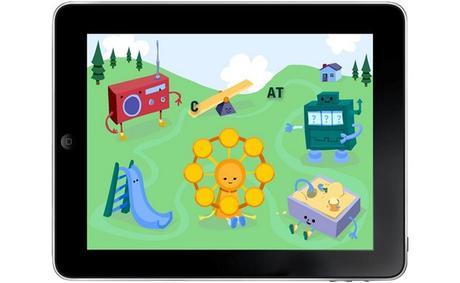As the world experiences a deep digital revolution and society moves towards becoming completely reliant on smartphones, tablets and computers, the way we educate people is also congruently reshaping. The demand for educational games (a.k.a. “serious games”) and learning applications via mobile device is growing at rapid speed due to the explosion of progressive mobile technology. In fact, the learning games market is forecasted to be an $8.9 billion industry in 2017. Thus, a change in the system of education is happening now and affects learning at all stages of life including early education, middle and high school level, college academia, and post-college professional development.
Early Childhood

The youngest generation out there is growing up in a world where cursive is no longer taught, “how to use technology”-type classes are part of a five-year old’s school curriculum and most of these children can likely navigate an iPad better than their grandparents. Early childhood is a crucial stage where fundamental cognition and understanding are formed so it’s no surprise that the mobile industry is tapping heavily into providing games for this particular demographic. Reputable educational organizations such as PBS Kids have been at the forefront of app and game invention geared for their impressionable viewers, steering them towards hopefully a brighter future. For children, using mobile devices is second nature and leveraging the technology can help promote basic comprehension skills. Plus these technologies have the ability to cater to each child’s innate capabilities and further expand upon them.
Middle/High School
Social media savvy, pubescent teenagers are already the mobile industry’s main and probably favorite consumer audience and proponents. The classroom is transforming to be more digital in order to engage easily distracted middle school and high school students. Game-based learning has proven to be an interactive way for students to learn and grasp complex concepts such as physics and astronomy. For example, games like “Universe Sandbox” give players control of creating their own universe, experimenting by trial and error with things like black holes and gravity. By giving adolescent boys and girls a way to hold the autonomous individualism they crave so badly during this period of life, their comprehensive efficiency could improve with the actions of making their own choices.
College

Once college hits, having a smartphone is a norm which means young adults are Instagramming, Snapchatting, Facebooking and texting non-stop to maintain their ever-important social lives. Not having the resources to access digital classroom platforms like “Blackboard” or online podcasts isn’t really an excuse anymore because devices are more and more obtainable and affordable, paving the way for mobile games to have an influential place within academia. So much time is being spent not studying and playing games on laptops at university libraries and dorms it poses a logical partnership to throw in some educational benefits with the constant use of these gadgets. Expensive textbooks impose an unwelcome burden upon college kids on the ramen-noodle budget, so digitalizing required reading is very enticing and could have a positive impact on the financial structuring of higher education.
Post-College
In the work world, learning doesn’t stop. There is currently an upward trend in job-related simulation games that train career professionals within specific areas of expertise. Simulation programs utilizing mobile virtual reality devices are particularly making a name for themselves in fields like healthcare where employees are able to practice using medical equipment in a virtual setting before touching the actual high-costing machines. The intense visuals, superior sounds and smooth-running functions executed in mobile games are possible because of leaps and bounds taken in processing unit technology. Snapdragon’s advanced mobile processor is a key player in some of the top mobile devices and allows for an ultra-high resolution, subversively engaging gaming experience to take place.
The mobile boom has come about in most recent years due to increasingly obtainable, inexpensive hardware, exponential expansion of network connectivity, the standardization in the expectation that one must have an education to succeed and the adoption of brain science software. This brain science software lets education become more universal to every type of learner as it forms a teaching system that has the ability to capture exactly how each individual learns and then adjusts to personalize teaching methods for optimal absorption of materials. From early childhood to career-focused games, mobile apps will continue to be developed and integrated within the world of academia and beyond.
About the author:
Jennifer Thayer is a technology writer who enjoys writing about gadgets, apps and the latest tech news. Follow her on Twitter.

